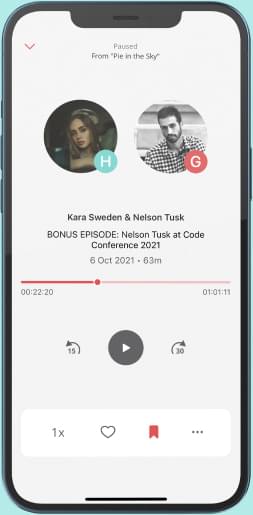
Dennis Ford is founder and CEO of Life Science Nation, a sourcing platform for market intelligence and prospect pipeline development for life sciences companies. An expert in the art of international fundraising, he is also the author of The Life Science Executive’s Fundraising Manifesto. In this episode, Dennis shares real-world insight into how fundraising in life sciences has evolved, and why you’ve got to “go global” to succeed in today’s competitive marketplace. The Four Pillars of Life Science Put simply, the life sciences industry can be broken down into the “four Ds”: Drugs, Devices, Diagnostics, and Digital Health. Each category has its own timeline and development path – from the lengthy 15-20 year process for drugs to the relatively quick development cycle for digital health solutions. Typically, startup companies need to target 600 to 800 potential investors to run an effective 9-18 month fundraising campaign. This number isn’t arbitrary – Dennis has seen even established health tech funds vetting 800 companies just to make three investments in a year. Similarly, the global life sciences market can be divided into three main regions: Asia Pacific (including China, Japan, Taiwan, Korea, Singapore, and Australia) Europe and the UK North America (U.S. and Canada) While there is activity in other regions like Africa and South America, these three markets represent the primary playing field for life sciences innovation and investment. This new reality means going global isn’t an option, it’s a necessity. Dennis explains: “There just aren’t enough investors in a particular region to allow them to play that numbers game.” Even in rich ecosystems like Boston/Cambridge or Silicon Valley, staying local severely limits opportunities. The Language Myth One common concern about going global is the language barrier. Dennis easily counters that notion as an obstacle, explaining that English typically serves as the universal language in the field, particularly among academic and research institutions. Investors, licensing partners, and other stakeholders are often comfortable communicating in English, “and I have not seen in my conferences or any of my trips that me not speaking the native language is a deal killer,” he adds. Interestingly, while language should never stop you from expanding globally, Dennis discovered an unexpected cultural challenge: the persistence required in following up with potential investors. Entrepreneurs from certain cultures are hesitant to make multiple attempts to reconnect, viewing it as inappropriate or “spammy.” Dennis emphasized that success often comes after numerous attempts – sometimes even on the twentieth contact. He describes in detail how syndicated investments typically work, with a lead investor taking primary responsibility for oversight and management of the company through regular meetings and milestones. Even with a diverse group of investors from different countries (e.g., Chinese, European, and American investors), the lead investor – often chosen based on geography or similar criteria – handles the day-to-day management while other investors participate at key milestones and funding calls. To facilitate these international connections, Life Science Nation holds RESI (Redefining Early Stage Investment) conferences every few months, providing regular engagement beyond one’s local region. Once a company secures international funding, Dennis advises companies to source investors from different regions because they have “footprints” in a particular region; more than just capital, diversity provides valuable regional expertise, connections to distributors, and insights into local markets when it’s time to commercialize. True Stories Translate Ultimately, what matters most to investors? While scientific validity is crucial, Dennis explains, investors are equally – if not more – interested in the human story behind the science. He shares a powerful story of an experienced pharma executive who was initially reluctant to share the story of how her son’s illness inspired her work. Once she finally embraced the storytelling, she went on to win Australia’s top entrepreneurial pitch competition. Key Takeaways for Global Success: Start with a comprehensive target list of 600-800 potential investors Implement a proper CRM system to manage relationships Develop a compelling narrative that can be told in various time frames (5 seconds to 3 hours) Don’t limit your reach to the local region or even your home country Prepare for a 9-18 month fundraising journey Be persistent in follow-ups, regardless of cultural norms Balance technical expertise with personal storytelling The Global Life Sciences Opportunity The life sciences industry has entered a golden age, with innovations emerging from research institutions worldwide. The global distribution of talent and innovation means that neither the best technologies nor the best funding opportunities are confined to any single region. For entrepreneurs in the life sciences space, the message is clear: thinking globally isn’t just about expanding your market – it’s about survival. Whether you’re developing a groundbreaking drug in Boston, a medical device in Minneapolis, or a diagnostic tool in Singapore, your fundraising strategy needs to be global from day one. Check out the links below to learn more about global fundraising in life sciences and his book, The Life Science Executive’s Fundraising Manifesto. Links Email: dford@lifesciencenation.com Book: https://www.amazon.com/Life-Science-Executives-Fundraising-Manifesto/dp/0990325105 Website: www.lifesciencenation.com RESI Conference: https://resiconference.com/ LinkedIn: https://www.linkedin.com/company/2775813 Connect with Wendy - https://www.linkedin.com/in/wendypease/ Music: Fiddle-De-Dee by Shane Ivers - https://www.silvermansound.com
From "The Global Marketing Show"


Comments
Add comment Feedback